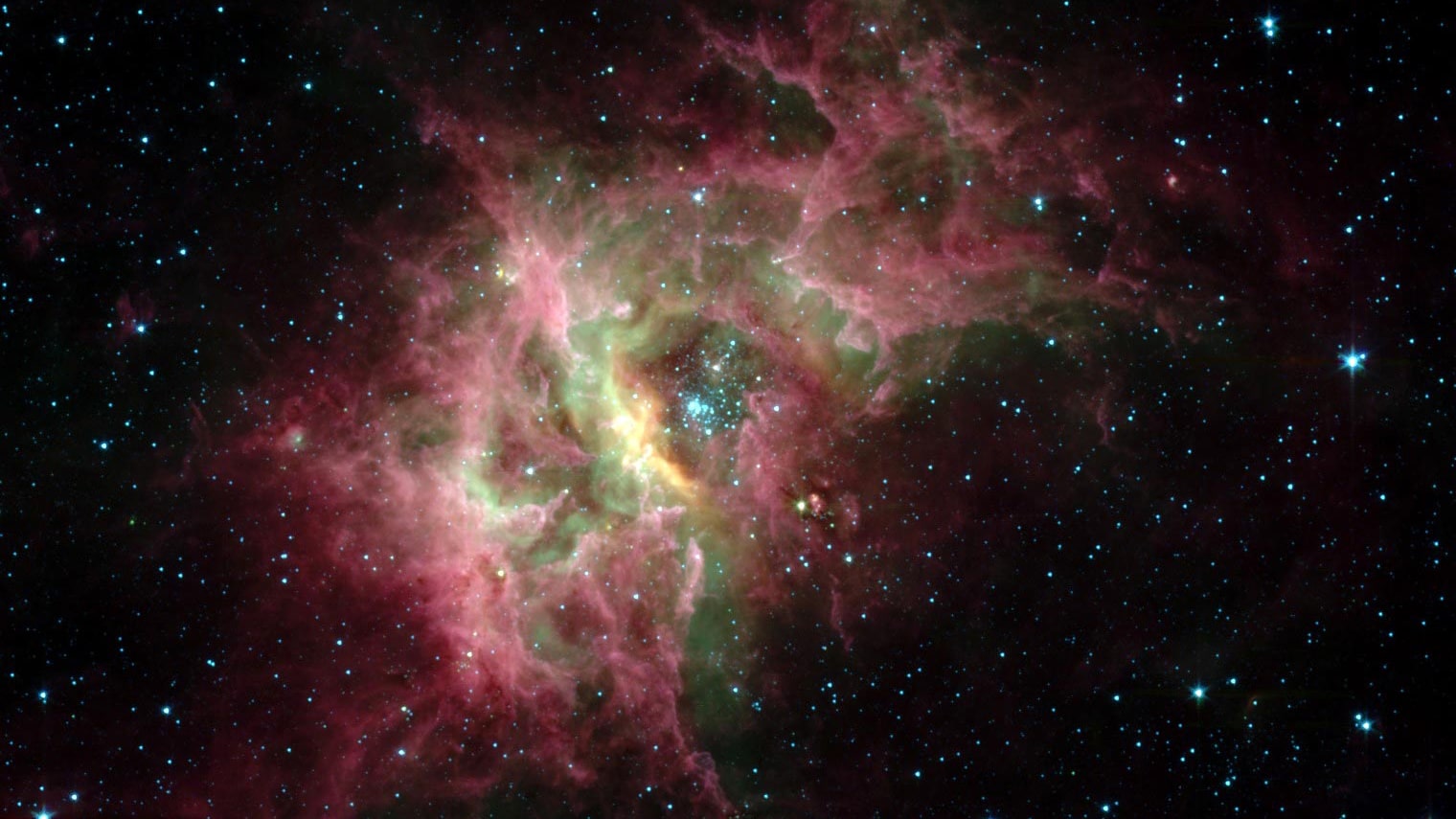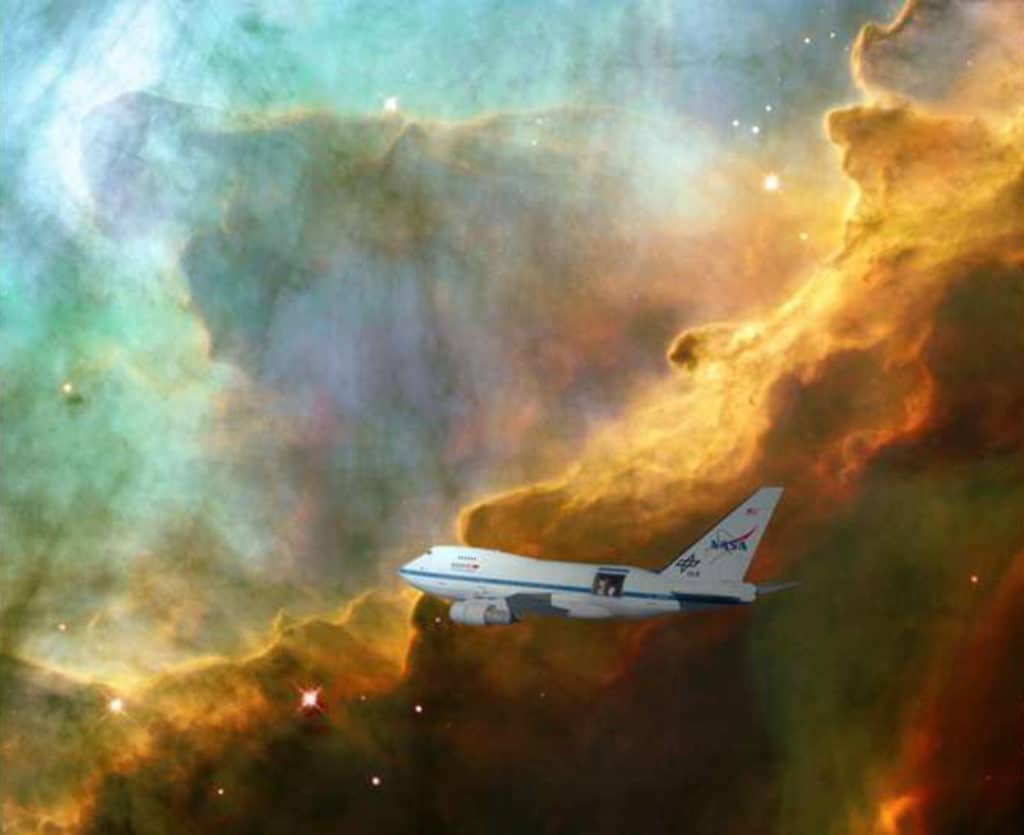
Using data from Stratospheric Observatory for Infrared Astronomy (SOFIA) telescope scientists at the University of Maryland have created the first high-resolution image of an expanding bubble of hot plasma and ionized gas where stars are born. The data help them analyze one of the brightest, most massive star-forming regions in the Milky Way galaxy.
They found a single, expanding bubble of warm gas surrounds the Westerlund 2 star cluster. The study also contradicts earlier studies suggesting there may be two bubbles surrounding Westerlund 2.
Maitraiyee Tiwari, a postdoctoral associate in the UMD Department of Astronomy and lead author of the study, said, “When massive stars form, they blow off much stronger ejections of protons, electrons, and atoms of heavy metal, compared to our sun. These ejections are called stellar winds, and extreme stellar winds can blow and shape bubbles in the surrounding clouds of cold, dense gas. We observed just such a bubble centered around the brightest cluster of stars in this region of the galaxy, and we were able to measure its radius, mass, and the speed at which it is expanding.”
The bubble’s surface is made from a dense gas of ionized carbon. The gas forms a kind of outer shell around the bubbles, where star formation takes place. Like the soup in a boiling cauldron, the bubbles encasing these star clusters cover and intermix with clouds of encompassing gas, making it difficult to recognize the surfaces of individual bubbles.
Scientists, at first, measured the radiation emitted from the cluster across the entire electromagnetic spectrum, from high-energy X-rays to low-energy radio waves. Based on the measurements, they created a clearer picture of the bubble surrounding Westerlund 2.

Ramsey Karim (M.S. ’19, astronomy), a Ph.D. student in astronomy at UMD and a co-author of the study, said, “We can use spectroscopy to tell how fast this carbon is moving either towards or away from us. This technique uses the Doppler effect, the same effect that causes a train’s horn to change pitch as it passes you. In our case, the color changes slightly depending on the velocity of the carbon ions.”
Later, the team determined the movement of carbon ions: whether they are moving toward or away from Earth. The resulting information was then combined with measurements from the rest of the electromagnetic spectrum. Doing so, the team was able to create a 3-D view of the expanding stellar-wind bubble surrounding Westerlund 2.
Along with obtaining a clearer picture, scientists found evidence of new stars forming in the shell region of this bubble.
Their analysis also suggests that as the bubble expanded, it broke open on one side, releasing hot plasma and slowing the expansion of the shell roughly a million years ago. But then, about 200,000 or 300,000 years ago, another bright star in Westerlund 2 evolved, and its energy re-invigorated the expansion of the Westerlund 2 shell.
Tiwari said, “We saw that winds from another very massive star reaccelerated the expansion of the bubble surrounding Westerlund 2, and that started the process of expansion and star formation all over again. This suggests stars will continue to be born in this shell for a long time, but as this process goes on, the new stars will become less and less massive.”
Journal Reference:
- “SOFIA FEEDBACK Survey: Exploring the Dynamics of the Stellar-wind-driven Shell of RCW 49” Astrophysical Journal (2021). DOI: 10.3847/1538-4357/abf6ce
Continue reading First high-resolution image of an expanding bubble of hot plasma and ionized gas on Tech Explorist.
0 comments:
Post a Comment